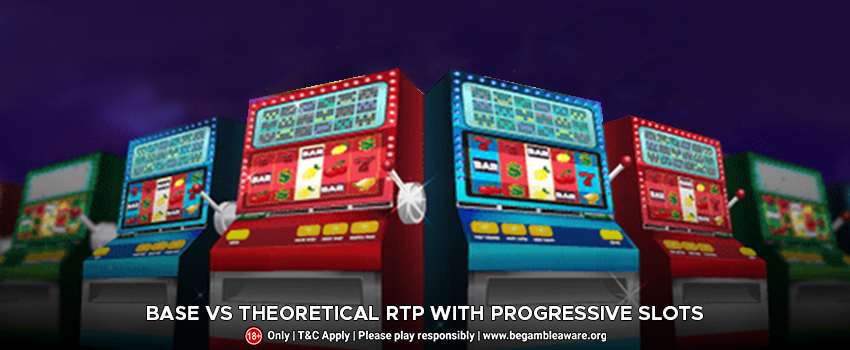
In the realm of slots, return to player (RTP) is a crucial notion. It shows how much cash you can expect to earn on usual when enjoying a specific game.
For instance, a slot with a 96.5 percent RTP is a significant level gamble than one with a 95% return. You get a greater probability of succeeding if you choose slots with a high RTP regularly.
On the other hand, not all slot payout statistics are what they appear to be. Slot machines with progressive jackpots are an ideal representation of this.
When playing a progressive slot, it’s essential to know the difference between the theoretical and fundamental RTP.
Details regarding progressive slot games are mentioned in the subsequent article and why the difference between theoretical and base payback is crucial.
What Are Progressive Slots and How Do They Work?
The payout on a progressive slot machine advances steadily with every wager. It funds its prize by deducting a tiny amount from each bet.
Here’s an illustration of how this works:
- On a progressive game, you place a $1 wager.
- Every bet is deducted 1% by the slot machine.
- With each $1 stake, you contribute $0.01 to the jackpot.
A progressive slots jackpot grows indefinitely unless someone gets it. The designer would now seed the highest reward at a specific amount.
The majority of these casino jackpots are simply a few thousand dollars in size. The largest and most renowned progressive jackpots, on the other hand, could have seed amounts of $1 million or more.
The seed value has a significant impact on the size of a progressive reward. An enormous jackpot will attract more participants and, as a result, will grow in value over a period.
What Is RTP Base?
The payback of a progressive game when the prize is first seeded is the base RTP. It shows how much cash you could anticipate earning from a slot machine before the award starts to climb.
For instance, a designer may set the jackpot of a progressive game at $50,000. At this time, the slot would have a 94 percent base payback.
Admittedly, the chances of success in a progressive jackpot are pretty slim.
The base payout on several progressive slot machines is relatively modest. Progressive casino games with a basic RTP of less than 92 percent are not uncommon.
What Is Theoretical RTP, and How Does It Work?
To a certain extent, all about slot payout ratios is theoretical. Slot machines, after all, are pretty unpredictable.
Progressive slots, on the other hand, place a strong emphasis on theory. All of the RTP that comes from a rising jackpot is just that: theoretical.
Here’s how theoretical payback functions in practice:
- A slot machine has a base RTP of 95%.
- The prize pool starts at $100,000.
- The prize pool grows until it hits $1 million.
- You’ve calculated a theoretical RTP of 98 percent.
This notion is significant since it identifies whenever a progressive game provides better lengthy benefits. However, you only grasp the importance of this after you get the jackpot.
Furthermore, you will not be able to determine the theoretical RTP of any progressive game. You don’t possess sufficient knowledge to decide this.
Instead, it would help to make a theoretical value assumption based on the jackpot seed, base RTP, and current jackpot position. A prize that has risen well beyond its initial amount would be worth a lot more.
Which Type Of Retaliation Is More Beneficial?
For objective reasons, the base RTP is more beneficial. It gives you a fair estimate of how much you could get without the bonus jackpot cash.
When you have a low base payback, that means you’ll get a lot of smaller rewards while pursuing a large jackpot. Especially if you never hit it large, you’ll be able to keep your bankroll afloat.
However, a lower base RTP indicates that you will not succeed as often. As a consequence, your money is much more liable to vanish quicker.
Theoretical RTP has advantages as well. Whenever it comes to progressive slots, it comes into action when you want to obtain the most long-term worth out of them.
Theoretical repayment, on the other hand, isn’t feasible. Even if you assume a progressive slot has a theoretical RTP of 105 percent, you’re certainly unlikely to earn $105 for each $100 bet.
The theoretical amount is also purely speculative. Slot system providers do not provide sufficient data to establish the precise payment proportion as a prize increases. You’re only speculating and expecting to be correct.
Why Should Both Kinds of Retaliation Be Considered?
Whenever it comes to progressive slots, I already stated that the base RTP is much more significant. It gives you a more precise notion of what kind of payout regularity you could anticipate.
However, I don’t think theoretical RTP should be entirely abandoned. This statistic can pay off in the future.
The ideal method is to take into account both the actual and theoretical payback. In this manner, you have both the fundamental aspect of base payback and the theoretical RTP revenue possibility.
You’re not going to get any theoretical repayment any time soon. Nonetheless, it is something to think about.
Conclusion
With nonprogressive slots, the RTP is precisely as it appears. After all, in these games, the highest payment does not increase.
A progressive slot, on the other hand, has a jackpot that is constantly altering. The grand reward keeps increasing until it is achieved.
With progressive slots, you should distinguish between base RTP and theoretical RTP. The former is ideal for calculating your odds of succeeding in the shorter run. The majority of progressive plays payout between 92 and 95 percent of the time.
On the other hand, Theoretical RTP takes into consideration both the base payout % and the additional prize. Should estimate this value to the utmost of your ability.



